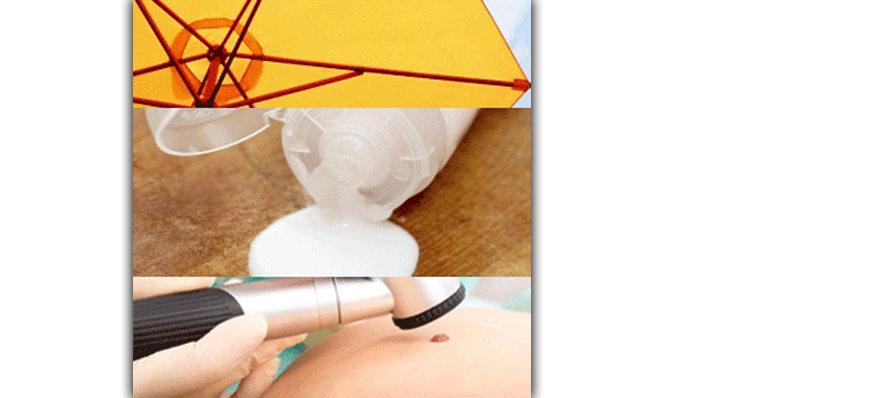Rosacea: medically explained, plus new discoveries & treatment technologies. An M.D. Article Contribution.
At Skintelligencenter.com, we include articles contributed by doctors who wish to provide helpful information to their patients and the public at large, or who respond to our requests to use them as professional resources. Doctors may or may not prefer to remain anonymous and we respect this preference. These resource articles do not in any way imply an endorsement by the physician of Skintelligencenter or VMV HYPOALLERGENICS®—they are intended for informational purposes only. While written by or with resource professionals, these articles should not be relied on for diagnostic accuracy or applicability to your particular skin, which requires an in-person ocular consultation with a qualified physician. For appropriate care for your skin, please consult your dermatologist
Rosacea Prevalence
Reports of the prevalence of rosacea vary in different countries (13 million in the USA, 10% of a population in Europe). But most studies state that the actual number is much higher because rosacea is frequently undiagnosed or misdiagnosed. Misdiagnosis can be even higher in non-Caucasian skin. Rosacea can be frustrating because it is so multi-faceted, involving bright redness, dilated vessels, big pores, photosensitivity, extreme dryness and large cysts or acne—frequently all at the same time.
Most rosacea treatments use steroids or azelaic acid to reduce inflammation and redness—both of which are not intended for long-term use and can be irritating or have other side effects. Others rely solely on antioxidants. And several contain allergens which are proven to promote inflammation and dryness.
Why focus on rosacea? First, there is strong evidence that it is more common than initially thought. Second, the frequency of under- and misdiagnoses suggests that there is a need for a better understanding of the condition. Third, its multi-factorial nature suggests that rosacea may share common inflammatory pathways with other skin conditions. And fourth, the contradictory nature of some symptoms—acne and severe dryness—can make treatment difficult (many acne treatments are drying on purpose, for example).
We asked our founding dermatologist-dermatopathologist for help. Her research uncovered important new developments and led to our new Red Better line (page 3). Read on to learn more about rosacea and how to better manage it.
What Is Rosacea?
Rosacea is the prototype of red facial skin. It is characterized by:
- Centrofacial redness,
- Fine to more prominently-dilated capillaries (telangiectasia),
- Small bumps that become larger that may eventually develop into acne and thick skin.
Diagnosis
One or more of the following is/are sufficient to make the diagnosis:
- Flushing (transient erythema or redness),
- Persistent redness,
- Obvious dilated capillaries,
- Papules (bumps without infected matter) or pustules (bumps with infected matter, like pimples).
Additional symptoms and signs to look for are: burning/stinging, facial edema (swelling), dryness, plaques (raised patches), eye redness, similar changes beyond the face, and phymatous (swelling, masses, or bulbous) changes of the nose.
Who Gets It?
Rosacea changes are often first seen at age 30, more among women, with men more often having the type that produces bulbous thickening (rhinophyma) of the nose and bumps. While rosacea is described as more common in fair-skinned individuals, there are no prevalence studies among Asians and darker skin types where it is known to exist but is also often unrecognized or misdiagnosed as contact, photocontact, seborrheic or atopic dermatitis.
Risk Factors/Causes
Those who tend to get rosacea seem to have a combination of 1) genetic predisposition, plus 2) an environment/lifestyle that includes triggers like spicy foods and sun and light exposure, 3) certain microbes on the skin and/or in the stomach, and 4) higher-than-normal levels of naturally-occurring pro-inflammatories in their bodies. In detail, common risk factors include:
- A tendency to flush (turn bright red) easily in response to:
- Certain chemicals or natural ingredients,
- Some foods, such as alcohol or hot (both temperature and spiciness) foods;
- Psychological factors like stress or shame.
- Chronic sun and light (including heat) exposure; and
- Genes: having blood vessels that increasingly dilate as they respond to stimuli.
Other factors include micro-organisms:
- Demodex folliculorum (mites that live in the hair follicles of susceptible people).
- Helicobacter pylori infection in the digestive tract.
Another theory concerns vascular development, the flow capacity of blood vessels, and neuro-transmitter mechanisms.
Some of the newest research shows cathelicidins as the primary cause for the inflammation in rosacea. These proteins are important to our innate immunity but are also PRO inflammatory. Cathelicidins are markedly increased in skin with rosacea which makes it hyper-reactive.
VMV RECOMMENDATIONS:
Articles contributed by doctors do not contain product recommendations for ethical reasons, and we at VMV HYPOALLERGENICS® believe in protecting the skintegrity of our resource physicians. Below are some products that we at Skintelligencenter.com feel can be recommended based on the preceding article. They are our “skinformed” selections based on the information given above and not necessarily recommended by the medical author of the article.
Prevent
Your “apple-a-day”
The best way to deal with redness is to prevent it. Prevention is important in all health concerns—when it comes to rosacea and hyperreactive skin, it is vital. Your new mantra: “non-inflammatory”. Get 7-8 hours of sleep, de-stress, and exercise regularly. Improve your diet: avoid processed foods, white sugar, white rice, white pasta (switch to brown, whole-grain alternatives), soda, pre-packaged juices (even “health” juices unless you squeeze them yourself), candies, and chips. Choose very gentle, non-reactive, anti-microbial and anti-inflammatory products in all of your personal care, from shampoos and bathing care to makeup and sun care.
Therapy
Daily Regimen
Anti-inflammatory, moisturizing, comforting Red Better Redness + Inflammation Calming System. STEP 1: Deeply Soothing Cleansing Cream (nay, custard) is an ultra-gentle, comforting wash. STEP 2: Daily Therapy Moisturizer for anti-inflammatory + anti-cathelicidin therapy plus rich, palliative yet non-pore-clogging hydration (to prevent rosacea acne). STEP 3: Armada Post-Procedure 50+, a purely physical (“inorganic”) sun + light screen for use both indoors and outdoors all year round (redness conditions can be photosensitive and flare up just from indoor light exposure). Its subtle (mineral) green tint offsets redness, too. AS NEEDED: If you have acne, Red Better Spot Corrector is a uniquely non-drying (even hydrating and soothing!) quick-acting spot treatment.
Skin Emergency
Skin-Savers
The big deadline got moved up. Your toddler decided to see if your phone could swim. That curry was spicier than you thought. You’re finally meeting that big client after months of wooing. Despite your best efforts, this is too much for your skin and it happens: the full-scale(y), fire-engine-red flare-up. Your doctor may prescribe a topical steroid for short-term use—follow his orders. If you can’t get to your doctor, get relief with non-steroidal, non-irritating Red Better Flare-Up Balm. Other skin-emergency tips: dab Boo-Boo Balm on the tip of a towel wrapped around ice for a cold compress. If even water stings, stop all products for the duration of the flare-up. Favor darkness (turn off lights and avoid windows). Meditate, sleep, relax. See your dermatologist.





